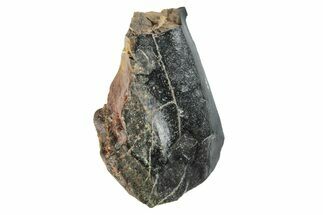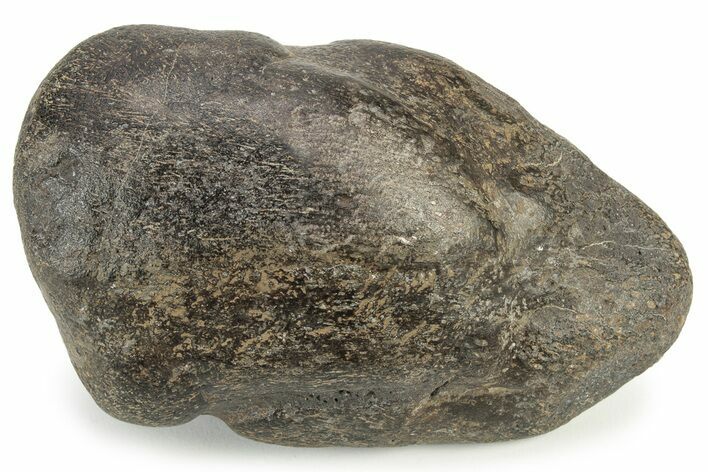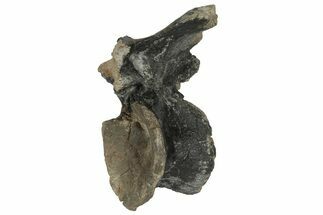This Specimen has been sold.
4.3" Fossil Dinosaur (Iguanodon) Claw - Isle of Wight, England
This very unusual offering is the ungual (claw) of Iguanodon cf. bernissartensis, a species of dinosaur known to have roamed Belgium, England, Spain, and Germany. It was collected from the Isle of Wight in England and is 4.3" long. British dinosaur material is extremely hard to come by and this is a fantastic collector piece.
It was found in three pieces, requiring crack repair and gap fill restoration within the cracks where the bone crumbled away.
Comes with an acyrlic display stand.
It was found in three pieces, requiring crack repair and gap fill restoration within the cracks where the bone crumbled away.
Comes with an acyrlic display stand.
About Iguanodon
Iguanodon was a large, herbivorous dinosaur that lived during the Early Cretaceous period, approximately 125 million years ago. It belonged to the group of dinosaurs called ornithopods, known for their bird-like, bipedal stance. Iguanodon was among the first dinosaurs to be discovered and named, with fossils first identified in the early 19th century. It is recognizable for its robust, bulky body, long tail, and a distinctive thumb spike, which likely served as a defense mechanism against predators or as a tool for foraging.
Typically reaching lengths of about 30 feet and weighing up to 5 tons, Iguanodon had strong hind legs, allowing it to move both bipedally and quadrupedally, depending on the situation. Its broad, beaked mouth was well-suited for cropping vegetation, and its grinding teeth suggest it primarily ate tough plants. The discovery of Iguanodon provided crucial insights into the diversity and evolution of dinosaurs, marking it as a significant find in paleontology.
The name is derived from 'Iguana', a modern reptile, and 'don', meaning tooth. Scientists used to believe that two species of Iguanodon were found on the Isle of Wight, but one species has been moved off into another genus.
Iguanodon was a large, herbivorous dinosaur that lived during the Early Cretaceous period, approximately 125 million years ago. It belonged to the group of dinosaurs called ornithopods, known for their bird-like, bipedal stance. Iguanodon was among the first dinosaurs to be discovered and named, with fossils first identified in the early 19th century. It is recognizable for its robust, bulky body, long tail, and a distinctive thumb spike, which likely served as a defense mechanism against predators or as a tool for foraging.
Typically reaching lengths of about 30 feet and weighing up to 5 tons, Iguanodon had strong hind legs, allowing it to move both bipedally and quadrupedally, depending on the situation. Its broad, beaked mouth was well-suited for cropping vegetation, and its grinding teeth suggest it primarily ate tough plants. The discovery of Iguanodon provided crucial insights into the diversity and evolution of dinosaurs, marking it as a significant find in paleontology.
The name is derived from 'Iguana', a modern reptile, and 'don', meaning tooth. Scientists used to believe that two species of Iguanodon were found on the Isle of Wight, but one species has been moved off into another genus.
SPECIES
Iguanodon cf. bernissartensis
LOCATION
Isle of Wight, England
FORMATION
Wessex Formation- Wealden Group
SIZE
4.3" long, 2.6" wide
CATEGORY
SUB CATEGORY
ITEM
#231969
We guarantee the authenticity of all of our specimens.
 Reviews
Reviews














